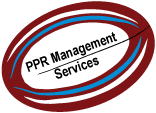Nobody asked for my opinion, but that’s never stopped me before. So here goes. I’ll teach you a little bit about a fundamental and powerful, yet under-utilized and often poorly used, business process, and hopefully raise the status of rugby in the United States. Hold onto your hats…
To be successful, an organization must be integrated, from top to bottom. The entire organization must move in the same direction, towards the same goals. This can be done, and is being done in many successful organizations. An organization that is disjointed will not only under-utilize its resources, weakening itself, it will pull itself in different directions, maybe even pull itself apart. Business or rugby, for-profit or non-profit, to be successful you must be integrated. So how to do that?
Strategic Planning. I work with organizations to develop effective strategic planning process, and I write and give presentations on the topic. Just the words, strategic planning, cause many eyes to roll, but that’s because the process has a bad reputation. Much like rugby used to have a bad reputation, but we’ve overcome that, for the most part, and so can strategic planning. What I’m talking about is an effective process to set goals, and then achieve them.
First, the simple basics of this process, then a plan for United States rugby. Rugby in the United States is disjointed, and it needs to be integrated. It can be done, and here’s a method to do it. An effective strategic plan consists of four elements:
1) Products & Services
2) Markets
3) Financial
4) Structure
It is also backed up with an Action Plan and an effective Performance Measurement System. And this is a process, and ongoing process, not something that’s performed once a year resulting in a piece of paper that sits in a drawer. The plan must be infused throughout the organization, from the top executive to the lowest level individual.
Now, no matter what you think, USA Rugby is a good organization. My thoughts are to enhance the organization, integrate the entire rugby community, and raise the level and awareness of rugby throughout the country. You can also use this same methodology in your business, and should.
With each of the four dimensions, specific goals or objectives must be identified. They have to be specific and measurable, and they have to be realistic, though they should be stretch goals. USA Rugby offers a variety of products and services. The various teams that are supported, including the Men’s and Women’s National Teams, the training camps, coaching programs, player registrations, are all products and services. For strategic goals, the organization must identify products and services that it will offer in the future, either new ones or modifications of existing ones. For an organization of this size and maturity, five years out at a minimum should be looked at, with some 10 or 20 year goals included. What products and services will USA Rugby be offering five years from now? That should be spelled out in the plan.
For markets, you’re looking at different segments. These can be geographic segments, age and gender segments, or anything else that makes sense. This also includes the fan segments. Right now, rugby in the U.S. primarily consists of players and former players. The market has to expand beyond that, to the general public, but specific market segments must be identified and targeted over a specific time horizon.
Financial causes problems for some people, because it refers to more than just a budget. It consists of defined targets for revenue, costs, and profit margins. I have no idea what the budget for USA Rugby is, but let’s say it’s $10 million a year in revenue. The strategic plan might include a goal of $20 million in revenue five years from now, or sponsorship contracts will total $10 million, or administrative costs will decrease to 5% of revenue. Whatever they are, they are specific targets, not vague or fuzzy numbers.
Structure is another area that causes some confusion. Structure includes things like specific positions, operating divisions, and departments. What will your organization look like five years from now? What will the reporting system look like, how will the operating divisions relate. Again, these goals have to be specific. The structure of a $20 million organization may look quite a bit different than that of a $10 million organization. But maybe not. Either way, you have to define it.
After you defined the goals in these four dimensions, the Action Plan integrates them. You might not offer all your products and services in all your markets, so you need to define which products in which markets, and the revenue provided by each product in each market. This is also where you come up with a more detailed timeline, and the prerequisites for tasks. To get to $20 million in revenue five years from now, what will the revenue be in four years? In three, two, and one year from now? And if you’re going to offer a particular service five years from now, what will have to be done in three years, and what has to be done today? The thing to remember with the Action Plan is that it is still a high level plan. The individual divisions, units, and people will have far more detailed plans, task lists, and to-do lists. But they all flow down from the strategic plan and they all support that plan.
If you want to actually achieve all these goals and plans, you have to measure your performance. A performance measurement system is not the annual review that everyone loathes and that accomplishes nothing. An effective performance measurement system ties the whole organization together and gets it moving in the same direction, to achieve those goals defined in the strategic plan. A performance measurement system is not a punishment system. Performance measurements have two purposes; 1) measure progress, and 2) influence behavior. You have to measure the progress you’re making towards your goals, to keep on track and make any adjustments that need to be made, and you have to guide everyone’s behavior towards achieving your goals.
Everyone involved with rugby needs to working towards the same goals; an active, robust, popular, and respected sport, enjoyed by millions of players and fans. The whole rugby universe needs to be financially stable, from the smallest local club to the governing body, USA Rugby. Every game that is played, every tournament held, every training camp, must help to move the organization towards its defined goals. Measurement like the number of new players recruited, the number of players retained each year, the increase in revenue or budget of a club or territorial union, will help to measure progress and influence behavior. Again, this is not punishment, but if a club knows that they’re being reviewed and measured on financial stability and player retention, they’ll work towards meeting their goals. And by meeting their goals, they’ll be helping the organization meet its higher level goals. All the way up and down throughout the entire organization.
It won’t be easy, and there will be some resistance, but if everyone is moving in the same direction, everyone involved with rugby will benefit. If you’re used to playing in front of 20 old or injured buddies today, wouldn’t you be thrilled to play in front of 100 cheering fans tomorrow? You can still have a beer afterwards.
And you can do your part today; Adopt-A-Rugger and Hug-A-Rugger
Subscribe to Let's Talk Business!
Subscribe to:
Post Comments (Atom)








No comments:
Post a Comment